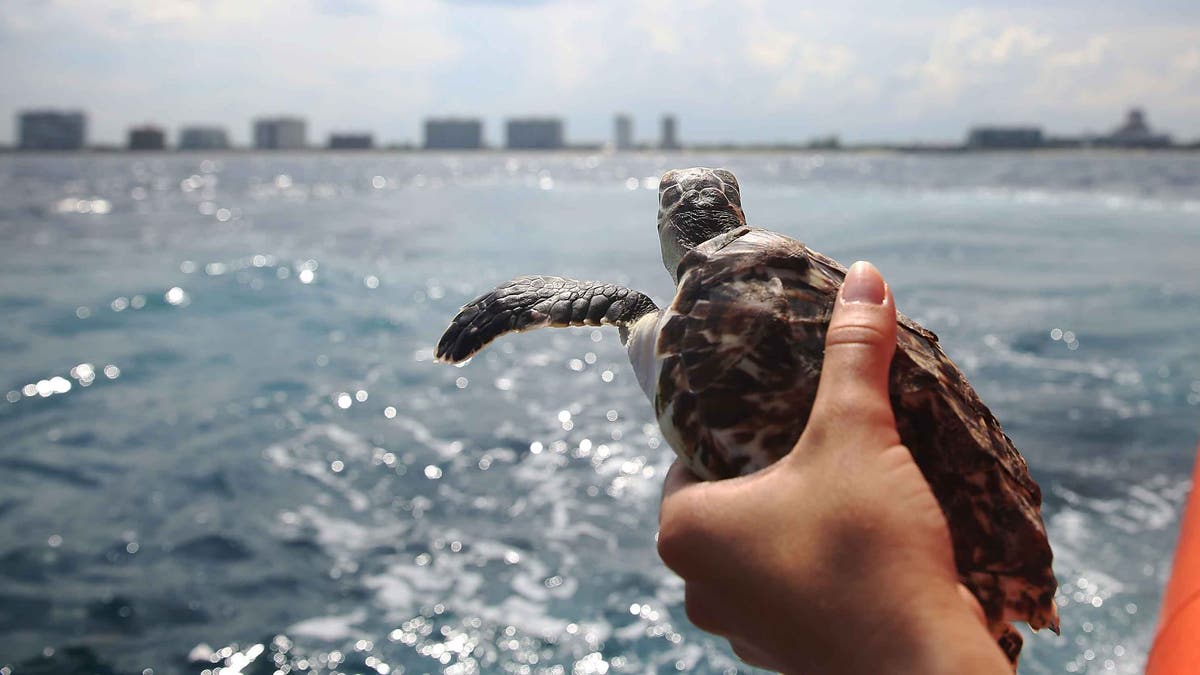
BOCA RATON, FL - JULY 27: Laurie Herrick, a Marine Turtle Specialist, prepares to release a Loggerhead turtle as it joins more than 570 baby sea turtles, including the Loggerhead and Green turtles, being released back into the Atlantic Ocean in a joint effort between the Coast Guard and the Gumbo-Limbo Nature Center on July 27, 2015 in Boca Raton, Florida. The sea turtles hatchlings come from turtle nests located along beaches throughout Florida, which are the primary nesting grounds for Loggerhead sea turtles. (Photo by Joe Raedle/Getty Images) (2015 Getty Images)
It’s the time of the year when thousands of marine turtles descend on a less-than-10-mile long strip of sand in the state of Oaxaca on Mexico’s Pacific coast to lay their eggs.
Once the eggs hatch – the baby reptiles can fit into the palm of a small child – they have to make their way to the sea. The female hatchlings won't return to this beach for another 25 to 30 years; the males never come back.
This process, which scientists believe has been happening for more than 100 million years, has been threatened for the last century as poachers hunt the eggs for food and adult turtles for their meat and skin.
To counter that, environmentalists and local families are taking to the beaches to guard a species which has been labeled as endangered by the World Wildlife Fund.
"I'm looking after them. So that [poachers] don't come and steal their eggs, kill them. So that dogs, black vultures don't kill them," resident Benito Cortes told Reuters.
The local efforts have been aided in recent years by the Mexican government, whose Commission of Aquaculture and Fishing has long been criticized by the United States and environmental groups for not doing enough to protect the reptiles.
Earlier this year, more than 12,000 abandoned Golfina turtle eggs were recovered from beaches in Michoacán and Oaxaca and taken to a facility operated by the Mexican Turtle Center, where they are to be incubated.
Experts say that much of the work done to protect the turtles is carried out by environmental groups or by reformed fishermen who hope the turtles can attract tourists to the region, rather than the government.
"We hope to receive some 150,000 nestings, which means 15 million eggs. Of those, not all will make it. In arrival beaches it's common the percentages of survival are low due to the number of eggs being laid," said Erika Peralta, who is in charge of the Olive Ridley Turtle Sanctuary Cooperative on La Escobilla beach, in the town of Santa María Tonameca.
